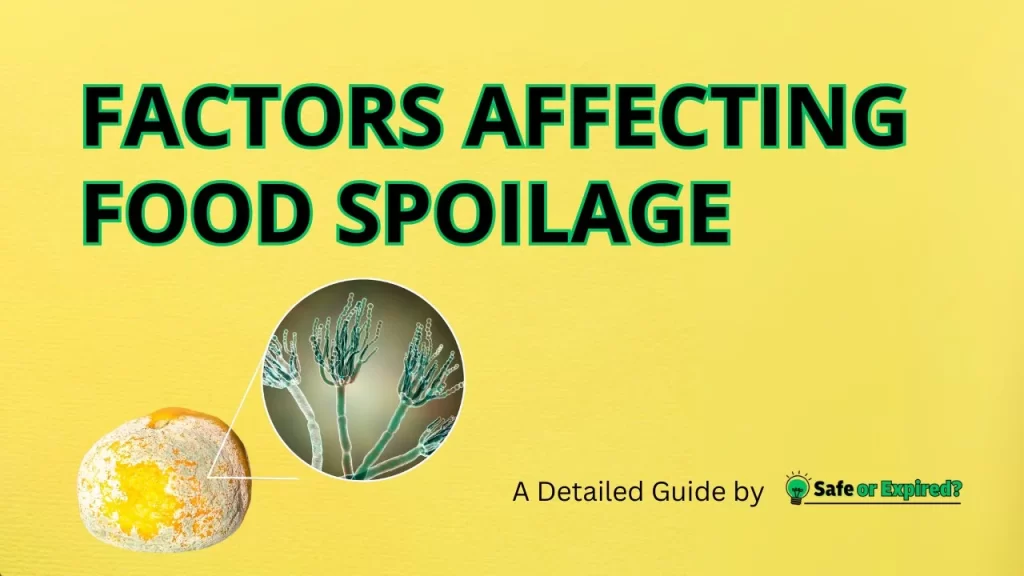Have you ever opened your fridge to find that your food has gone bad way sooner than you expected? Understanding the “Factors Affecting Food Spoilage” is crucial to keep our eats fresh for as long as possible. This article will explore how elements like temperature, moisture, and ethylene gas play pivotal roles in the shelf life of your groceries.
Get ready to arm yourself with the knowledge to outsmart spoilage factors and keep your food fresh!
Top 15 Factors Affecting Food Spoilage – All the Details
Food spoilage is influenced by several key factors: temperature, moisture, oxygen, enzymatic activities, and ethylene gas. Sometimes, factors like pH and seasonal variations can also degrade the food’s quality. In addition, handling practices, leakage, and contamination can also spoil the food.
Temperature
Temperature is perhaps the most significant factor affecting food spoilage. Most foods are stored best at specific temperatures to slow down bacteria and other microorganisms that cause spoilage.
According to USDA, refrigeration at temperatures below 40°F (4°C) significantly slows down microbial growth, helping preserve food for longer periods.
Conversely, temperatures between 40°F and 142°F (4°C to 60°C), known as the “Danger Zone,” accelerate bacterial growth, leading to quicker spoilage. Freezing food at 0°F (-18°C) can halt bacterial growth entirely, though it doesn’t kill all microorganisms.
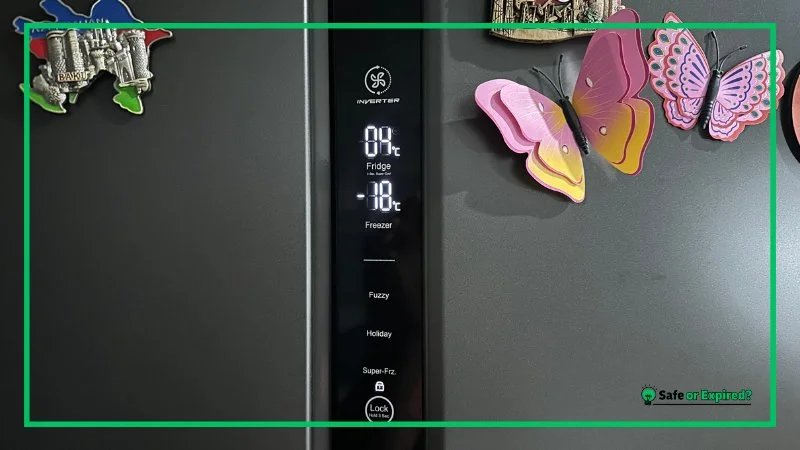
Understanding and controlling the storage temperature of your food is a vital step in extending its shelf life and ensuring its safety.
Here’s a table about ideal temperatures.
| Food Type | Ideal Storage Temperature |
| Fruits | 30-40°F (-1-4°C) |
| Vegetables | 40-50°F (4-10°C) |
| Meats | Below 40°F (<4°C) |
| Dairy | Below 40°F (<4°C) |
Moisture Content
According to Frontiers, the amount of water in food significantly influences how long it can be stored. High moisture can lead to the growth of microorganisms like mold and bacteria, causing food to spoil. On the other hand, low moisture can result in food becoming too dry, affecting its texture and taste.
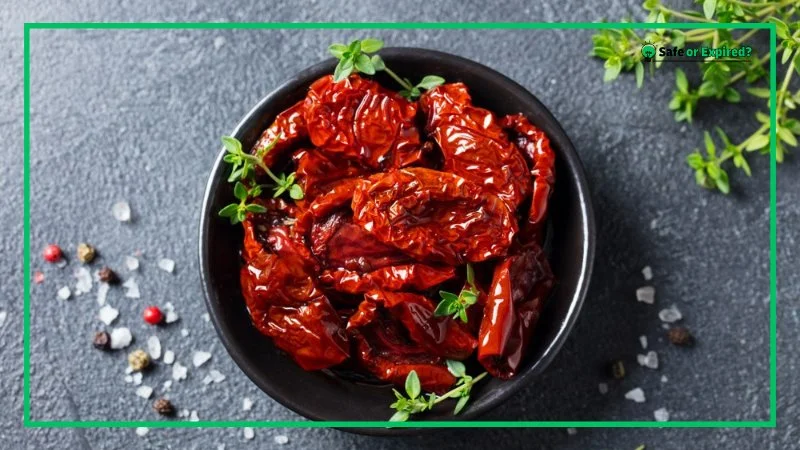
pH Levels
pH levels, indicating how acidic or alkaline food is, also play a crucial role in shelf life. According to a study in Annals of Microbiology, foods with lower pH (more acidic) are less prone to microbial growth, which helps in preservation. Many preservation techniques involve adjusting the pH to levels that deter spoilage, enhancing the longevity of food products.
| Food Category | Common Food Items | pH Range | Microbial Growth Susceptibility | Preservation Techniques |
| Highly Acidic | Lemons, Vinegar | Below 4.0 | Low Susceptibility | Refrigeration; The fermentation process enhances preservation |
| Moderately Acidic | Yogurt, Apples | 4.0 – 4.6 | Moderate Susceptibility | Refrigeration; The fermentation process enhances the preservation |
| Slightly Acidic | Cheese, Tomatoes | 4.6 – 5.3 | Increased Susceptibility | Refrigeration; use of anti-microbial agents |
| Neutral to Alkaline | Meats, Milk | 5.3 – 7.0+ | High Susceptibility | Refrigeration at low temperatures; freezing; heat treatment (pasteurization) |
Exposure to Light
Light exposure affects food shelf life by causing chemical reactions that can degrade food quality. For instance, light can lead to the loss of vitamins and changes in flavor. Protecting food from light, especially UV light, is essential. This is often achieved through the use of opaque packaging materials that block light.
Microbial Growth
Another big reason is something called microbial growth. Imagine tiny creatures, too small to see with our eyes, that find a cozy home in our food. These tiny creatures are called microbes, and they love to eat our food as much as we do! When they do, they make the food go bad. It’s like having uninvited guests.
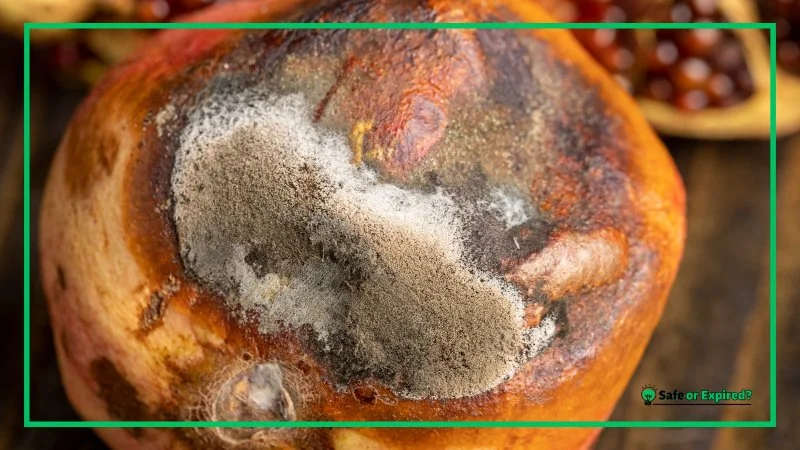
Microbes can be bacteria, yeasts, or molds. They find their way into our food from the air, water, or even from the soil. Once they land on the food, they start to grow and multiply quickly, especially if the food is kept warm and moist.
That’s why USDA has emphasized keeping food in the fridge. The cold slows down these tiny creatures and keeps our food safe to eat for longer.
Here’s a table about types of microbes and commonly spoiled foods.
| Microbe Type | Commonly Spoiled Foods | Optimal Growth Conditions |
| Bacteria | Meat, dairy, cooked vegetables | Warm, moist, protein-rich environments |
| Yeasts | Fruit, jams, syrups | Sugary, moist environments |
| Molds | Bread, fruit, cheese | Moist, sometimes less acidic environments |
Enzymatic Activity
Enzymes are like tiny scissors inside fruits and vegetables. They can cut and change the food from the inside. When a fruit or vegetable is damaged or gets too old, these “scissors” start working overtime. They break down the food, making it soft and mushy. Have you ever seen a banana turn brown? That’s enzymatic activity in action!
Some enzymes are good and help make food taste better, like when bananas ripen. But if this goes on for too long, the food starts to spoil. Keeping fruits and vegetables in a cool place can slow down these tiny scissors and help keep the food fresh.
Atmospheric Oxygen
Oxygen in the air can affect food shelf life through a process known as oxidation. This process can lead to the spoilage of food by changing its fats and oils, resulting in off-flavors and the loss of nutritional quality.
Foods exposed to oxygen can also become discolored. According to a study, oxygen and carbon dioxide can also help spoilage bacteria grow.
To combat this, food preservation often involves reducing exposure to oxygen. Techniques like vacuum sealing or using oxygen absorbers in packaging are common methods to prolong shelf life by minimizing oxidation.
Packaging
The role of packaging extends beyond just holding the product. Good packaging acts as a barrier against moisture, light, oxygen, and contaminants.
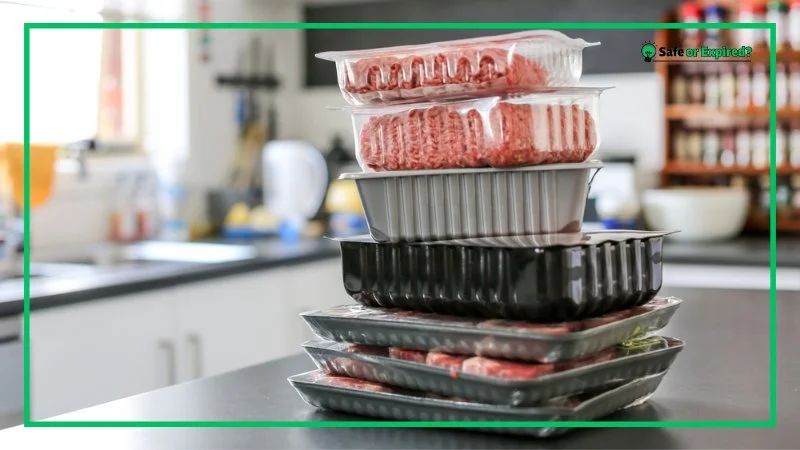
It also helps maintain the food’s integrity by keeping out unwanted microorganisms. Innovations in packaging, such as modified atmosphere packaging (MAP), actively alter the environment inside the package to extend the freshness of food products by reducing oxygen levels and increasing levels of other gases like nitrogen or carbon dioxide.
A biodegradable, antimicrobial food packaging system has been developed by researchers from the Harvard John A. Paulson School of Engineering and Applied Sciences and the Harvard T.H. Chan School of Public Health.
This new packaging method is inspired by battlefield medicine and utilizes antimicrobial fibers to extend the shelf life of food products while eliminating microbial contamination. The packaging is made from pullulan, an edible, tasteless, naturally occurring polysaccharide, combined with natural antimicrobial agents like thyme oil, nisin, and citric acid.
This approach not only reduces food waste and foodborne illness but also offers a sustainable packaging solution by being water-soluble and biodegradable.
Physical Damage
Physical damage to food products can significantly accelerate spoilage by making them more susceptible to microbial contamination and enzymatic reactions. For example, bruises on fruits can lead to faster spoilage at the damaged sites.
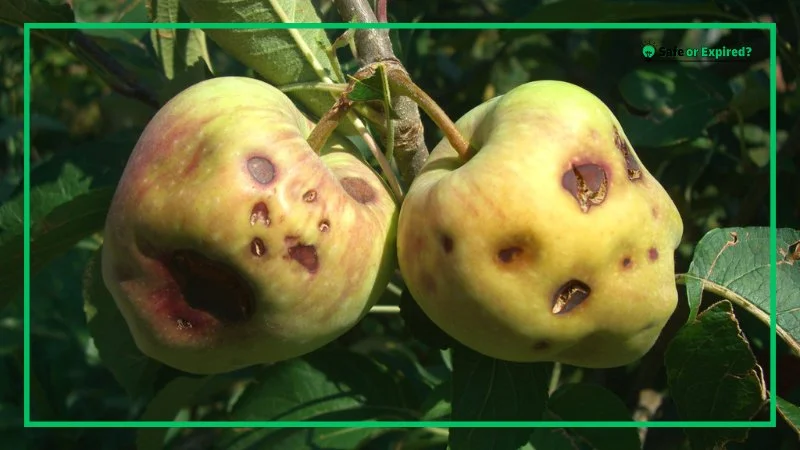
Similarly, cracks or breaks in the packaging can expose food to air, moisture, and microorganisms, leading to quicker degradation. Therefore, handling and transportation practices are designed to minimize physical damage and preserve food quality.
Contamination
Contamination refers to the unwanted introduction of harmful substances or microorganisms into food, which can significantly reduce its shelf life. This can occur at various stages of the food supply chain, from production to processing, storage, and even during packaging.
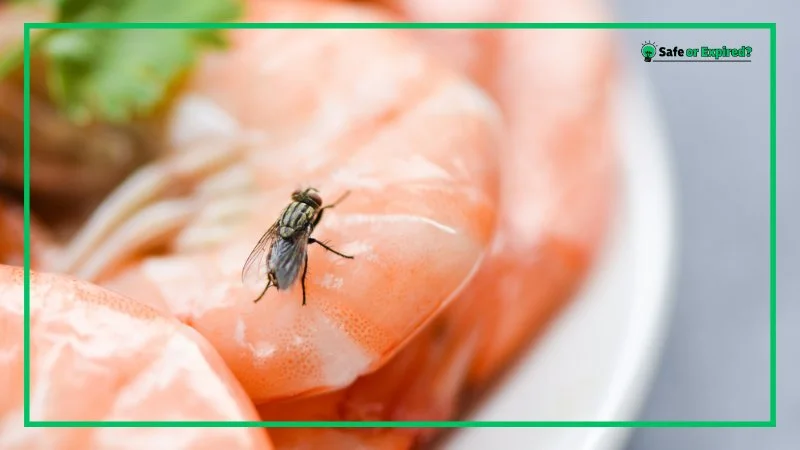
For example, if raw meat, which can contain harmful bacteria like Salmonella or E. coli, comes into contact with vegetables or kitchen surfaces, it can contaminate these items, making them unsafe to eat much sooner than if they remained uncontaminated.
Ethylene Production
Ethylene is a natural gas. It is produced by fruits and vegetables as part of their ripening process. This gas can speed up ripening and, consequently, the spoilage of sensitive produce. For example, fruits like bananas and apples produce high amounts of ethylene, which can hasten the ripening of nearby ethylene-sensitive items such as lettuce or cucumbers, leading to a shorter shelf life for these products.
This is why it’s recommended to store ethylene-producing foods separately from ethylene-sensitive ones. The knowledge of ethylene production is also utilized in controlled-ripening chambers where the concentration of ethylene is carefully managed to ensure fruits ripen uniformly and at a desired rate, optimizing their shelf life and quality for consumers.
Ethylene Production Example: Placing ripe bananas next to avocados can cause the avocados to ripen (and then spoil) more quickly due to the ethylene gas emitted by the bananas.
Here’s a list of common ethylene-producing foods:
- Apples
- Avocados
- Bananas (especially when they start to spot)
- Tomatoes
- Peaches
- Pears
- Plums
- Cantaloupes
- Kiwifruit
- Mangoes
- Papayas
- Nectarines
- Passion Fruit
- Figs
- Persimmons
Nutrient Content
The nutritional makeup of food and how it’s handled can significantly affect its shelf life. Foods high in unsaturated fats are more prone to rancidity due to oxidation. Examples are nuts and avocadoes. This process not only shortens their shelf life but also affects their taste and nutritional value.
Conversely, foods rich in natural preservatives, like antioxidants found in some fruits and vegetables, can have extended shelf lives. For example, the vitamin E in almonds acts as an antioxidant, which can help protect the nuts from oxidation, albeit they still need to be stored properly to maximize shelf life.
Handling Practices
According to FAO, handling practices play a crucial role in maintaining food quality. For instance, washing fruits and vegetables before storing them may seem like a good idea for removing contaminants. However, it can also introduce moisture that accelerates spoilage.
Berries are a prime example where washing before storage can lead to mold growth, significantly reducing shelf life. Proper handling, in this case, means washing them only right before consumption.
Similarly, how we handle meat from the point of purchase to storage at home affects its shelf life. Meats should be kept at safe temperatures to prevent bacterial growth. Leaving meat out at room temperature for too long after purchasing or during preparation can increase the risk of spoilage and foodborne illnesses.
Seasonal Variations
The season when food is harvested or produced can greatly influence its shelf life. For instance, fruits and vegetables picked during their peak season tend to have a higher nutritional value and are more resistant to spoilage than those harvested out of season.
This resilience is due to the natural ripening process, which ensures the produce is at its optimal state when it reaches consumers. For example, tomatoes harvested in the summer, their peak season, are not only more flavorful but also last longer when stored properly compared to tomatoes grown in greenhouses during the winter.
Seasonal variations also affect the availability and quality of certain foods, impacting their storage and consumption patterns. Foods transported long distances outside their natural growing season may require refrigeration or other preservation methods.
Consumer Practices
The Clemson University Home & Garden Information Center highlights the importance of storing leftovers properly to prevent foodborne illness, indicating how consumer practices impact food safety. For example, storing bread in a cool, dry place can prevent mold growth. However, keeping it in a humid environment may shorten its shelf life.
Similarly, refrigerating dairy products and opening them only when needed can keep them fresh longer. Consumer habits, such as buying in bulk without a plan for quick consumption or proper storage, can lead to increased food waste.
The tendency to overlook freezer storage for prolonging the shelf life of perishables like bread, meat, and even some fruits and vegetables is a common oversight that can lead to spoilage and waste.
An example of effective consumer practice is the method of rotating pantry goods, known as “first in, first out,” where older items are used before newly purchased ones. This practice helps in minimizing waste and ensuring food is consumed within its shelf life. Additionally, consumers who adjust their buying habits based on seasonal availability can enjoy fresher produce that lasts longer.
Talking about what causes food to spoil, you might wonder about specific foods and how long they really last.
Take lentils, for example. They’re a kitchen staple, but do they go bad, and does it make a difference if they’re cooked or not? Find out in “Do Lentils Expire? (Cooked vs Uncooked Comparison).”
Or what about carrots? Can you eat them if they’re past their prime, or is it risky? Get the lowdown in “Can You Eat Expired Carrots? Yes or No? (Safety Guide).”
Conclusion
Understanding the factors that lead to food spoilage can significantly impact how we store and consume our groceries, leading to less waste and more enjoyment from our meals. Here are the key takeaways:
- Temperature Control: Keeping foods or leftovers out of the “Danger Zone” (40°F-140°F) slows microbial growth.
- Moisture Management: Dry storage for grains and refrigeration for fruits and vegetables can prevent unwanted microbial activity.
- Ethylene Awareness: Store ethylene-producing foods away from sensitive items to avoid premature ripening.
- Proper Packaging: Airtight containers and proper packaging can shield food from oxygen and light, extending its shelf life.
- Smart Consumer Practices: Understanding and applying knowledge about food’s intrinsic properties, such as pH levels and nutrient content, can help in choosing the best storage methods.
By applying these insights, we can keep our food safe and enjoyable for longer, making the most out of our purchases and reducing food waste.

